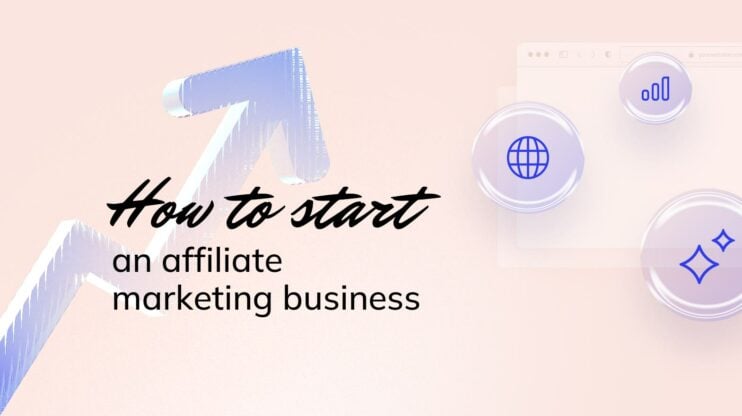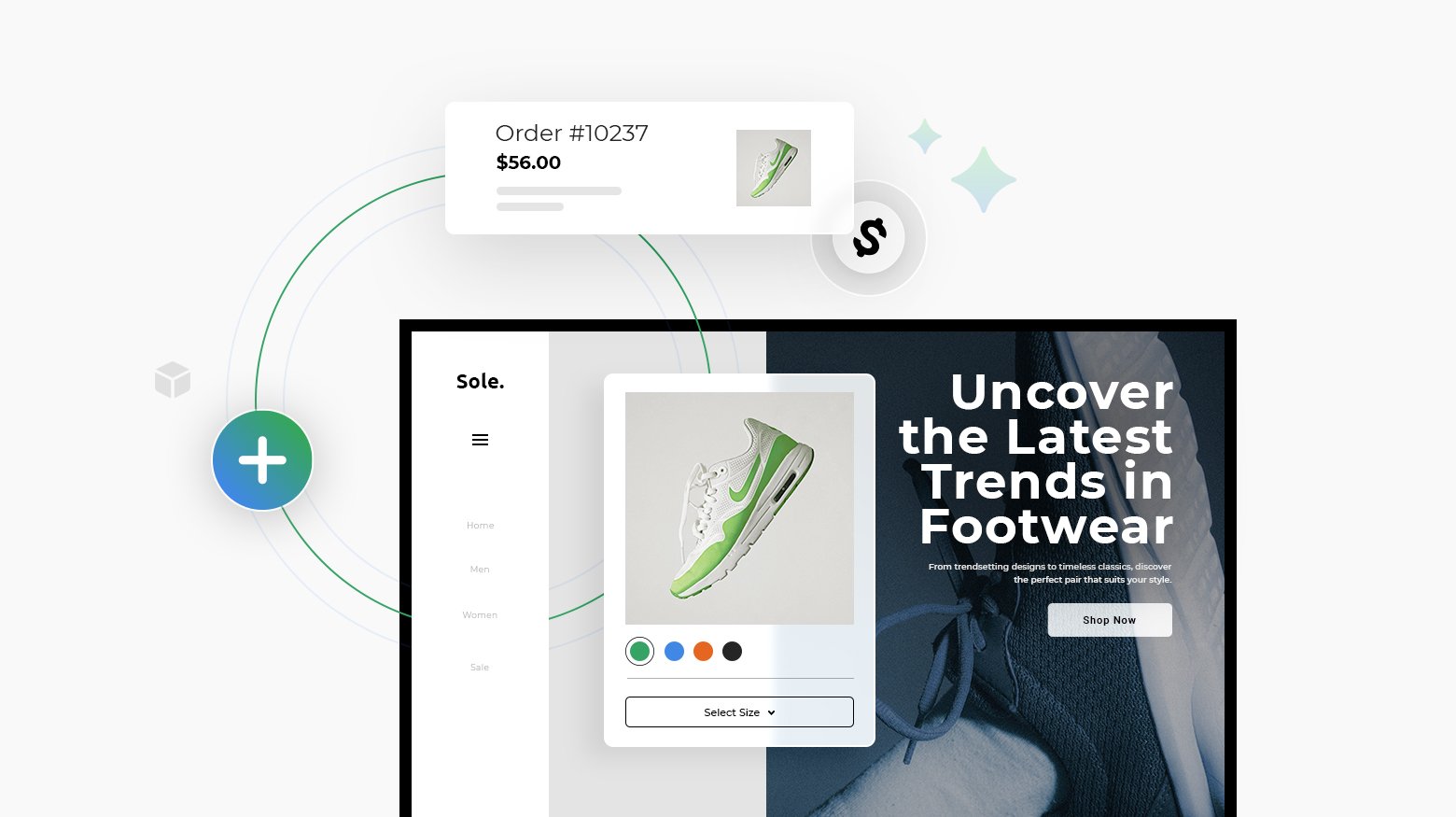You want to start selling online, but don’t have an idea in mind? Starting a reselling business can be the perfect fit for you. Online reselling has exploded into a multi‑billion‑dollar phenomenon, with everyone from college students to stay‑at‑home parents flipping thrift‑store finds and designer deals alike. It’s exciting, as you can start with almost no money, work flexibly, and watch a $5 thrift find turn into a $50 sale.
Sounds like easy money, but there are nuances in starting a reselling business you should consider. We’ll break down the common challenges, from sourcing and branding to web‑store setup, and show you how to decide on what to sell. Let’s discuss how to start a reselling business with little investment and scale fast.
How does reselling work?
Reselling is a simple concept: you buy products at a low price and sell them for a profit. You start by hunting down items from thrift stores, clearance racks, garage sales, wholesalers, or online liquidation sites.
Once you’ve got your inventory, you sell it on marketplaces like eBay or Amazon, social media platforms, or even your own website. Along the way, you handle pricing, shipping, and marketing.
One of the best parts of reselling is that your options are practically endless. You’re not limited to a single product or category. You can sell whatever you want to sell, whatever interests you, and whatever is in demand. Since you’re not limited to one category of products, here are some of the different things you can choose from.
- Fashion & accessories: These products have loyal, enthusiastic buyers always looking for their next great find.
- Home & décor: Home goods sell especially well with the right branding and appealing photography.
- Digital products: E-books, online courses, stock photos, design templates, or graphic assets can be created once and sold indefinitely.
- Services & experiences: Selling experiences or services allows you to capitalize on your unique knowledge or connections without holding physical inventory.
- White-label products & services: Offer products or services like software, marketing tools, or website building under your own brand, without creating them yourself. Later, we’ll show how AI-powered website and hosting solutions (powered by 10Web) can help you do exactly that.

Create your online store in minutes!
Looking to sell online? Develop and launch your store with 10Web AI Ecommerce Website Builder.
How to start a reselling business step by step
Now that you have a basic idea of how a reselling business works and what you can expect, it’s time to go into the steps of starting a reseller business.
Step 1: Choose your niche and platform
The diversity of reselling options is huge. Not to get confused, ask yourself what you want to sell, maybe there is something you are passionate about, something you have experience with, etc.
Once you’ve narrowed down your interests, go a little deeper:
- Evaluate high-margin categories: Including sneakers, vintage apparel, electronics, or limited-edition collectibles.
- Conduct quick market research: Use free tools like Google Trends to spot rising trends, or monitor social media conversations and hashtags to understand demand.
- Check laws and regulations: Don’t overlook legal details. You might need a resale certificate, business license, or permits depending on your location and niche.
- Choose your selling method: Will you sell through marketplaces like eBay and Amazon, launch your own website, or focus on offline channels such as local markets and pop-up events?
Step 2: Find a sourcing partner
Starting a reselling business will be impossible without a sourcing partner. Where will you get the items/services you want to sell? Having a responsible sourcing partner will directly impact your profits, product quality, and success. Depending on your chosen niche, the methods of finding a partner will change.
For example, if you’re reselling fashion or collectibles, sourcing from estate sales, thrift shops, or local auctioneers can yield unique and profitable finds. For electronics or digital products, wholesale distributors or specialized online marketplaces like Alibaba or Faire might offer the best deals and consistent stock. If you choose to resell white-label services, such as hosting solutions, your sourcing partner should provide reliable technology, support, and easy-to-use APIs—something we’ll cover more deeply later on.
Step 3: Build your online store
Let’s say you’ve decided to have an independent online store, with all the flexibility it offers. Building a reseller store takes nearly no effort (seriously). With 10Web’s AI Website Builder, you can create a fully functional, professional ecommerce site in just minutes.
It takes the description of your business and handles the rest—designing your homepage, adding key pages, and even generating initial content. From there, you can customize the layout, product pages, and checkout flow using a drag-and-drop editor without coding. Want more flexibility and speed in editing? Use the AI Co-Pilot, a chat-based editor, request changes, and let the built-in tool edit for you.
Let’s build your reseller store together:
- Go to 10Web.io > describe what you’re reselling > click Generate Your Website.
- Review and edit (if needed) the website name, description, and structure.
- Click Next > choose the website colors, fonts, and styles.
- Click Generate to apply.
When your store is ready, you can simply customize it using AI-based tools, and best of all, 10Web takes care of hosting, speed optimization, and mobile responsiveness, so you can focus on selling, with everything under one roof. To make your life easy, the 10Web ecosystem has WooCommerce integrated, and you can manage orders, products, see statistics, and more without leaving the 10Web dashboard.
Step 4: Promote your inventory
When your store is live, it’s time to fill it with products and bring in buyers. Start by uploading your inventory, automate it with CSV files or supplier feeds to save time. Now you can use AI to write clear, benefit-focused product descriptions and improve your images. Make sure your listings are SEO-friendly, easy to navigate, and mobile-ready.
Next, promote your store: connect to social shops, run paid ads, and send email campaigns. Use smart promotions, bundles, or loyalty offers to boost conversions. And don’t forget shipping—offer reliable, affordable options and clear return policies to build trust.
Finally, track your performance with analytics. Watch what’s working (and what’s not) so you can improve and grow with every sale.
Resell website building and hosting
Want to go beyond flipping physical products and start offering something scalable and in high demand? With more businesses and creators going online, website creation and hosting demand keep growing. Sellers, from fashion resellers to course creators, need a professional online presence, but most don’t have the time, tools, or tech skills to build one.
Reselling 10Web’s AI Website Builder and hosting can be a great place to start. You can offer clients a fully automated solution: they describe their business, and AI generates a ready-to-launch website in minutes. Through 10Web’s white-label API, you’ll be able to deliver these sites under your own brand, complete with custom domains, backups, hosting controls, and built-in performance tools.
Reselling website creation with 10Web is a simple way to offer real value, without the usual complexity. It’s a chance to be among the first to introduce a unique bundle of AI-powered website building and hosting to your audience.
Curious how it works? Request a quick demo and see it in action.
Start reselling today
You’ve seen how a reselling business can take you from zero to launch with almost no upfront investment, just a smart niche, reliable sourcing, and a killer online store. By choosing the right products, partnering with quality suppliers, you’ll move faster and scale more predictably.
AI tools like 10Web make it easier to launch quickly and look professional without needing to be a designer or developer. Now you’ve got options like the AI Website Builder API for reselling white-label website creation hosting, that go far beyond traditional reselling. Take the first step today!
FAQ
Is reselling a profitable business?
How do I start reselling for beginners?
How much does it cost to start a reselling business?
What is the most profitable item to resell?
How do I find reliable suppliers?
Which platforms are best for reselling

Create your online store in minutes!
Looking to sell online? Develop and launch your store with 10Web AI Ecommerce Website Builder.













